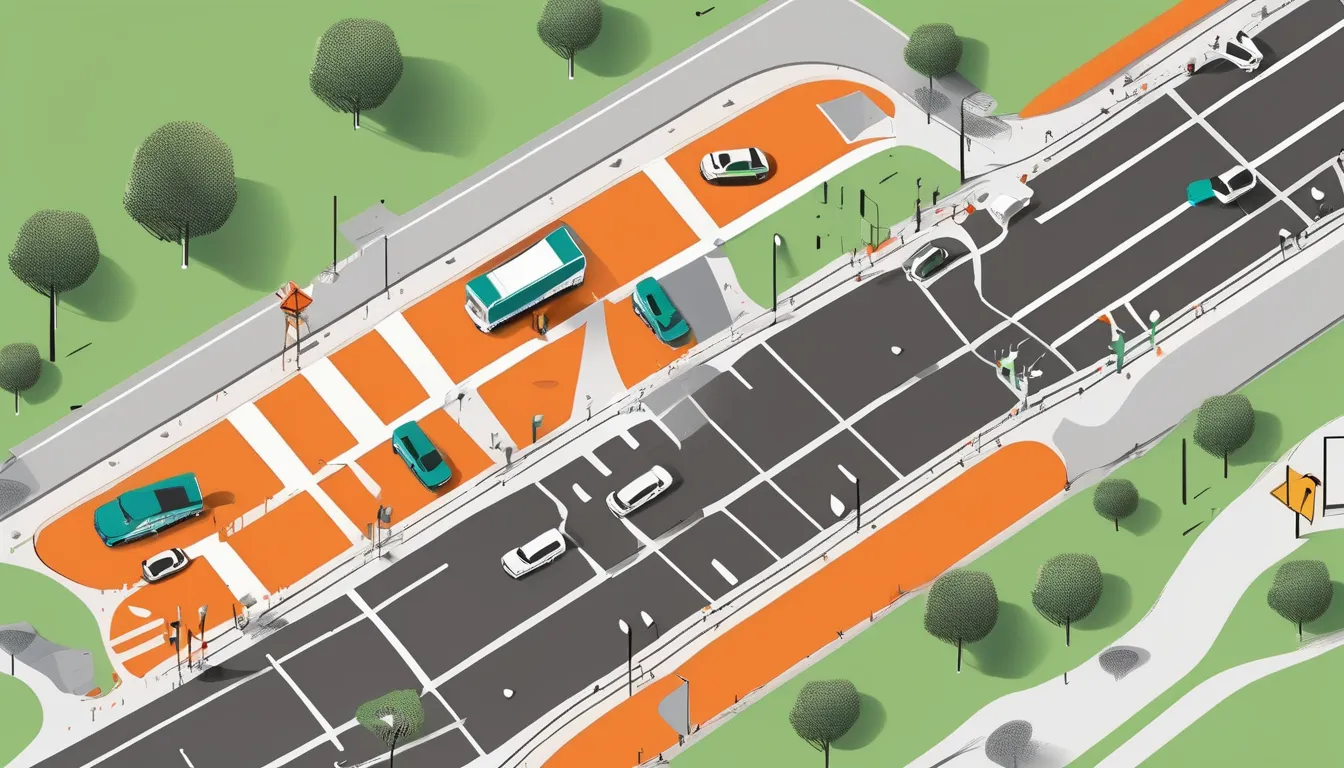
When you’re tasked with managing a lane closure for roadwork or maintenance, it’s crucial to get the temporary traffic control right to ensure driver safety and minimize disruptions. A well-designed traffic control plan involves strategic placement of warning signs and devices, as well as careful consideration of traffic flow and speed. You’ll need to consider factors such as road geometry, traffic volume, and nighttime conditions. As you start to develop your plan, you’ll need to consider the components of a lane closure warning system – but where do you start, and what are the key elements to include?
Planning and Design Considerations
When planning and designing temporary traffic control (TTC) zones, you’ll need to consider several factors to ensure the safety of both workers and road users. The first step is to assess the road conditions and determine the type of TTC zone you need.
Consider the speed and volume of traffic, road geometry, and the presence of pedestrians, cyclists, or other vulnerable users.
You’ll also need to evaluate the duration and schedule of the TTC zone. This will help you determine the type of traffic control devices and measures to implement, such as lane closures, detours, or temporary traffic signals.
Additionally, consider the time of day and any potential disruptions to traffic flow.
It’s also essential to consider the TTC zone’s impact on the surrounding environment, including noise levels, air quality, and nearby residents or businesses.
Traffic Control Device Placement
Proper placement of TrafCon Services in Austin TX control devices is crucial in ensuring the safety and efficiency of a temporary traffic control (TTC) zone. You’ll need to follow the guidelines set forth in the Manual on Uniform Traffic Control Devices (MUTCD) to ensure that devices are placed in the correct locations.
Start by identifying the advance warning area, where you’ll place warning signs and other devices to alert drivers to the lane closure.
You’ll also need to place traffic control devices within the transition area, where traffic is being diverted or merged into a different lane.
Devices such as cones, barrels, and channelizers should be spaced at intervals that are consistent with the MUTCD.
Make sure to place devices in a way that provides adequate visibility and doesn’t create a hazard for drivers.
You should also consider the speed and volume of traffic when determining the placement of devices.
It’s essential to ensure that all devices are clearly visible and easily readable, both day and night.
You should also check that devices are stable and won’t be easily knocked over by wind or traffic.
Lane Closure Warning Systems
Closing a lane can significantly impact traffic flow and safety. You must take steps to minimize disruptions and ensure the safety of road users. Lane closure warning systems are an essential part of this process.
They provide advance notice to drivers of a lane closure, giving them time to adjust their speed and position.
When designing a lane closure warning system, you’ll need to consider factors such as the type of road, traffic volume, and speed.
You’ll also need to choose the right warning devices, such as signs, arrows, and lights. These devices should be placed at strategic locations to provide clear and consistent information to drivers.
Typically, a lane closure warning system consists of three components: a warning section, a transition section, and a termination section.
The warning section alerts drivers to the upcoming lane closure, while the transition section guides them through the lane closure.
The termination section marks the end of the lane closure.
Managing Traffic Flow and Speed
As you implement a temporary traffic control plan, managing traffic flow and speed is crucial to maintaining safety and minimizing disruptions. You need to consider the impact of reduced lanes on traffic flow and take steps to maintain a smooth flow of traffic. This includes adjusting signal timing, using dynamic lane management, and implementing traffic calming measures.
To manage traffic flow and speed effectively, you should:
| Traffic Flow | Speed Management | Safety Benefits |
|---|---|---|
| Lane merging | Speed limit reduction | Reduced crashes |
| Dynamic lane management | Speed cameras | Enhanced driver awareness |
| Traffic signal optimization | Speed feedback signs | Lower speeds |
| Real-time traffic monitoring | Rumble strips | Improved safety |
| Incident management | Variable speed limits | Minimized congestion |
Implementing Nighttime Traffic Control
Implementing nighttime traffic control requires careful planning to ensure a safe and efficient flow of traffic during reduced visibility.
You’ll need to take into account the unique challenges posed by nighttime conditions, such as reduced visibility and altered driver behavior.
To effectively implement nighttime traffic control, you should:
- Use retroreflective pavement markings to help guide drivers through the work zone.
- Install temporary lighting that meets the Manual on Uniform Traffic Control Devices (MUTCD) standards to illuminate the work zone and provide adequate visibility.
- Use warning signs with reflective sheeting to alert drivers to the lane closure and guide them through the work zone.
- Monitor traffic flow in real-time to quickly respond to any changes or incidents that may occur during nighttime hours.
Conclusion
You’ve successfully implemented a temporary traffic control for a lane closure by considering planning and design, strategically placing traffic control devices, and using lane closure warning systems. You’ve managed traffic flow and speed, and ensured nighttime traffic control through proper lighting and retroreflective pavement markings. Your efforts minimize disruptions, ensure driver safety, and facilitate a smooth work zone experience. By following these steps, you’ll maintain safe and efficient traffic flow during lane closure projects.

